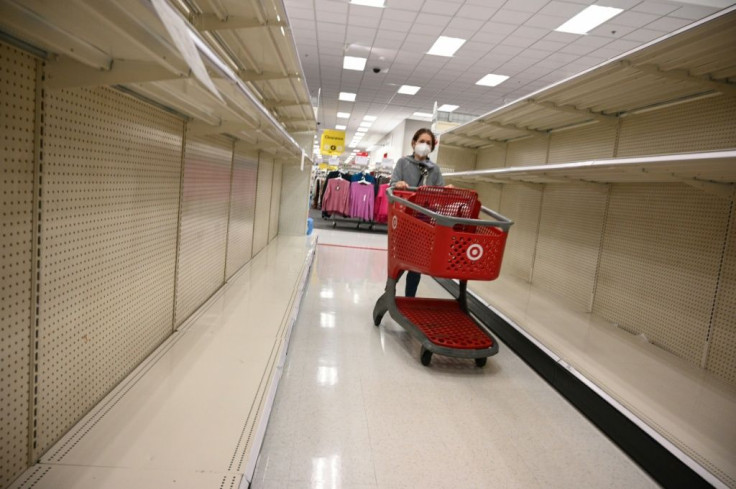US Economy: Will Americans Spend Stimulus Checks To Strengthen Growth?
KEY POINTS
- People spent their last stimulus checks on debt
- Consumer spending dipped in November
- Personal expenditures account for a big chunk of GDP
Debates on Capitol Hill continued Tuesday over the size of taxpayer stimulus. A House vote Monday increased the second round of federal direct payments to $2,000, with Democrats supporting President Donald Trump's efforts to boost an economy that has suffered due to the COVID-19 pandemic.
Research, however, shows that consumer spending trends might not be supportive of economic growth though they might be aided by a speedy vaccine rollout.
Robert Pavlik, senior portfolio manager at Dakota Wealth, said that stimulus spending could support short-term economic recovery.
“The market is seeing the additional stimulus as a way to get through at least the short term with money being put into the hands of individuals,” Pavlik told Reuters Tuesday. “The focus is that people are going to probably most likely spend that (money), which would help the economy progress a little bit further.”
Sen. Bernie Sanders, I-Vt., said late Monday he would try to force a vote in the Senate for a measure that would send $2,000 checks to individual taxpayers. A stimulus bill signed into law by Trump called for direct payments of $600 and supports state unemployment insurance with an additional $300 per week, though Trump and many Democrats want more.
Without any additional stimulus, millions of U.S. taxpayers would be left with only base-level unemployment insurance, which varies by state. That would in turn damage a U.S. economy buckling under the strains of a pandemic that’s forced many businesses to close, sometimes for good.
Though the figures are questioned in some circles, personal consumer spending accounts for somewhere around 70% of gross domestic product. The Commerce Department reported that spending decreased by 0.4% in November from October.
The Commerce Department attributed the decline to a decrease in spending on items such as clothing and motor vehicles. That, however, was offset by an increase in spending on take-out and food delivery, which only supports bars and restaurants so much.
The latest figures stem from the CARES Act, a $2.2 trillion stimulus package passed in March that sent $1,200 checks to individual taxpayers and added $600 to weekly unemployment benefits.
Scott Baker, an associate professor at the Kellogg School of Management at Northwestern University, found most taxpayers used their stimulus to pay off debt or otherwise catch up on outstanding bill payments. Consumers nevertheless spent lavishly on take-out.
“It might be that people are substituting away from splurging on other sorts of entertainment, since that’s all closed, and they’re ordering out more,” he said in a report published in May.
What’s different between then and now is the hopes of a vaccine to inoculate against COVID-19.
With investors betting on a future post-pandemic market, stocks are booming. Since the first vaccines moved out of clinical trials in early November, the Dow Jones Industrial Average has gained nearly 15%.
Businesses, meanwhile, may be less likely to reduce headcounts or cut investments because of the prospects of a return to normal, MarketWatch noted Monday.
“Hope for a vaccine could make consumers more willing to spend, especially on big-ticket items like homes and cars, where sales are already strong,” economists at PNC Financial Services said.
That in turn could drive the economy forward and suggests conditions by the middle of next year may be stronger than at the same point in 2020. Much of that, however, depends on widespread vaccine distribution and the eventual return to normalcy.

© Copyright IBTimes 2024. All rights reserved.











